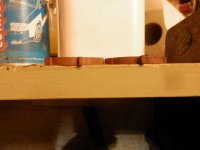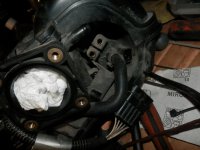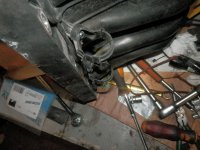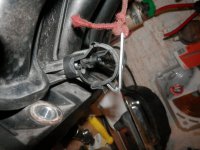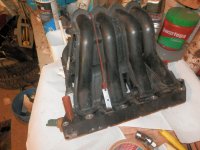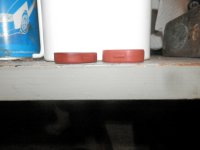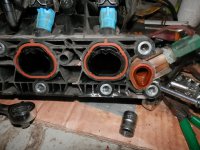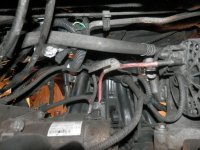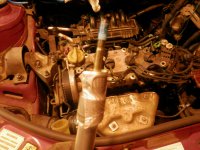sponger
Member
I have a 2005 fiat punto sporting 1.4.
When I recently replaced the thermostat I noticed coolant residue near the temperature sensor. Having cleaned up the area and having kept an eye on it, it seems to be losing a small amount of coolant from the temperature sensor housing rather than the sensor itself. (by small I mean a few drops under the housing after 50km of driving, no noticeable level drop in the coolant tank).
Has anyone replaced this housing before? It seems to be held in by the intake manifold, so I think this would need to be removed to replace the housing. Is this correct? If so, does the fuel rail need to be de-pressurised?
(I have seen some 1.4 engines with the temp sensor housed in the thermostat, this 1.4 is different).
Before I start taking things apart I thought I would seek advice/instructions/suggestions on the best process.
Any suggestions or instructions greatly appreciated.
When I recently replaced the thermostat I noticed coolant residue near the temperature sensor. Having cleaned up the area and having kept an eye on it, it seems to be losing a small amount of coolant from the temperature sensor housing rather than the sensor itself. (by small I mean a few drops under the housing after 50km of driving, no noticeable level drop in the coolant tank).
Has anyone replaced this housing before? It seems to be held in by the intake manifold, so I think this would need to be removed to replace the housing. Is this correct? If so, does the fuel rail need to be de-pressurised?
(I have seen some 1.4 engines with the temp sensor housed in the thermostat, this 1.4 is different).
Before I start taking things apart I thought I would seek advice/instructions/suggestions on the best process.
Any suggestions or instructions greatly appreciated.



